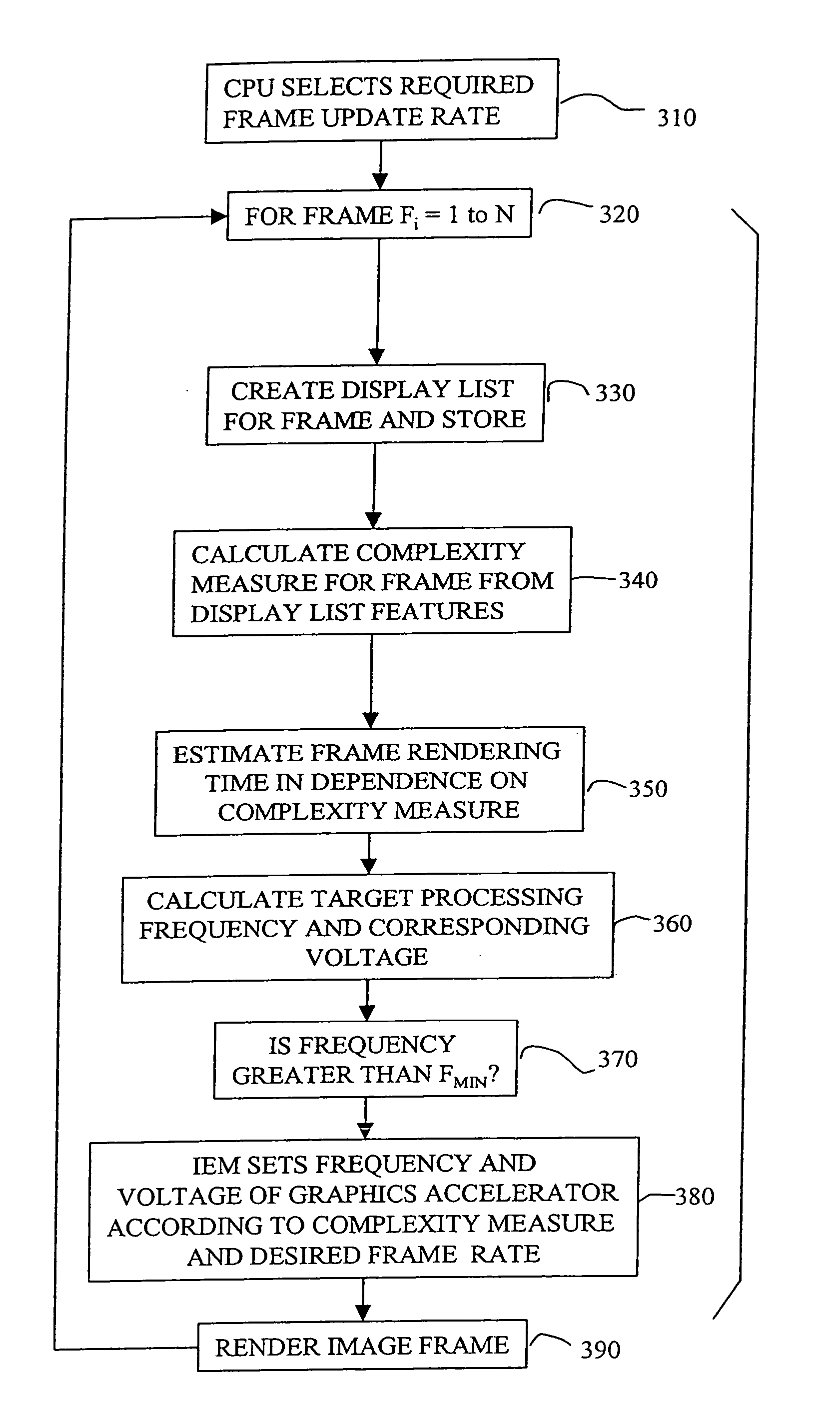Data processing system
a data processing system and data processing technology, applied in the field of data processing systems, can solve the problems of only acceptable processing performance reduction and significant deviation of the actual required level of the predicted processor, and achieve the effect of accurately predicting the performance setting parameter
- Summary
- Abstract
- Description
- Claims
- Application Information
AI Technical Summary
Benefits of technology
Problems solved by technology
Method used
Image
Examples
Embodiment Construction
FIG. 1 schematically illustrates a graphics processing apparatus for rendering 3D graphics. The apparatus comprises: a central processing unit (CPU) 100; a graphics accelerator 110; a first memory module 120 and an optional second memory module 122; an Intelligent Energy Management (IEM) clock 130 and a power supply unit 140.
The CPU 100 controls the 3D graphics processing operations. Images are constructed from constituent image elements known as graphics primitives or polygons and a 2D to 3D texture mapping process is performed to add visual detail to the 3D geometry. Examples of types of graphics primitives are points, lines, linestrips (comprising a plurality of lines that share vertices), triangles, trianglestrips (comprising a plurality of triangles that share sides), trianglefans (comprising a plurality of triangles all of which share a common vertex) and sprites (independent rectangles defined by the vertices of diagonally opposite corners).
The CPU delegates certain image ...
PUM
 Login to View More
Login to View More Abstract
Description
Claims
Application Information
 Login to View More
Login to View More - R&D
- Intellectual Property
- Life Sciences
- Materials
- Tech Scout
- Unparalleled Data Quality
- Higher Quality Content
- 60% Fewer Hallucinations
Browse by: Latest US Patents, China's latest patents, Technical Efficacy Thesaurus, Application Domain, Technology Topic, Popular Technical Reports.
© 2025 PatSnap. All rights reserved.Legal|Privacy policy|Modern Slavery Act Transparency Statement|Sitemap|About US| Contact US: help@patsnap.com



